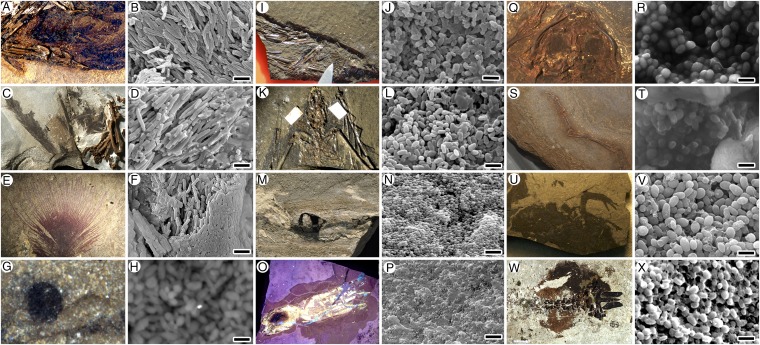Fig. 1.
Range of fossils analyzed with TOF-SIMS imaged using photography and under SEM. (A and B) Fossil complete bird with associated feathers, Messelornis, Messel, Eocene, Germany. (C and D) Articulated bird associated with feathers, undescribed, Fur Formation, Eocene, Denmark. (E and F) Isolated feather previously described as iridescent (2), Messel, Eocene, Germany. (G and H) Complete cyclostome fish preserving the eye, detailed, Mazon Creek, Carboniferous. (I and J) The bat Hassianycteris, Messel, Eocene, Germany. (K and L) The bat Palaeochiropteryx, Messel, Eocene, Germany. (M and N) Fossil ink sac, Lyme Regis, Lower Jurassic, England. (O and P) Fossil octopus (?Keuppia) associated with ink sac, Cretaceous, Hakel, Lebanon; UV image courtesy of Jonathan Jackson. (Q and R) Fossil frog preserving eyes, Paleobatrachus, Messel, Eocene, Germany. (S and T) Same frog as in Q, detailing skin preserved on the hind leg, Messel, Eocene, Germany. (U and V) Fossil frog, Pipidae, Mush Valley, Miocene, Ethiopia. (W and X) Fossil tadpole, Pelobates, Oligocene, Enspel, Germany. Specimens were photographed under normal light, except in O, which is imaged under UV light as well as scanning electron microscopy images. See SI Appendix, Table S1, for details. (Scale bars, 1 µm.)

